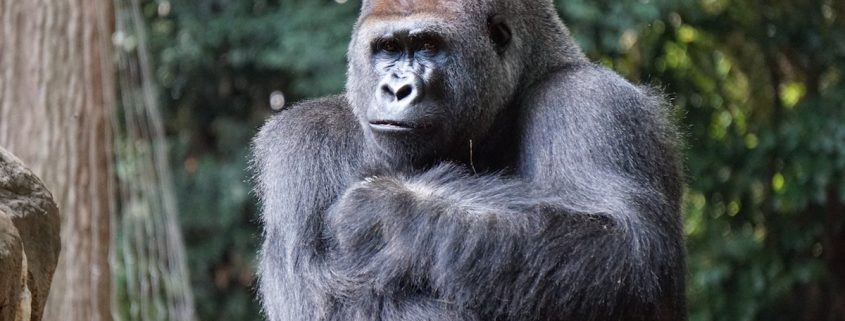5 Ape Facts: Exploring Our Closest Living Relative
The ape family includes great apes such as gorillas, chimpanzees, orangutans and bonobos, as well as lesser apes like siamangs and gibbons. Apes are known for being human’s closest relatives. In fact, we share about 98% of our DNA with chimpanzees, but how much do we really know about apes? Go ape for these 5 ape facts!
1. Apes Have Fingerprints

Photo Credit: pixabay.com
Fingerprints are not unique to humans. Apes like gorillas and chimpanzees also possess their own unique prints. Additionally, gorillas have hands very similar to a human’s too. They have five fingers including an opposable thumb, which is what most animals lack. An opposable thumb helps them grasp items just like a human.
2. Birth Control Pills Work on Gorillas

Photo Credit: pexels.com
Yes, you read that right, women’s birth control pills work on female gorillas too! Humans and apes may be more similar than you think. Even though gorillas are generally slow breeders, some zoos may put their gorillas on birth control to prevent inbreeding or overcrowding. It’s a pretty neat and convenient method of popular control.
3. Newborn Gorillas Are Half the Size of Human Newborns

Photo Credit: pixabay.com
Although gorillas and humans have a similar gestation period, newborn gorillas are only half the size of human newborns. If you compare the size of adult humans and adult gorillas, the size of a newborn gorilla is remarkably small! In addition, ape mothers usually care for their young until they are ready to live on their own. Only after their offspring can fend for themselves, will apes mate again.
4. Great Apes Can Catch The Flu

Photo Credit: huffingtonpost.com
As we have so much DNA in common, greater apes can catch the same infections that affect humans. This includes the flu, the common cold, and even pneumonia. They develop symptoms similar to humans such as coughing and sniffling. Because of this, some zoos in temperate climates don’t let their apes outside when the temperatures drop. On top of that, it’s also possible for apes to catch a cold from humans.
5. An Ape’s Voice Box Is Similar To A Human Baby’s

Photo by Rob Schreckhise on Unsplash
Apes cannot speak because their voice box (or larynx) is located too close to their mouth. Similarly, the placement of a baby’s larynx is similar to an ape’s, which is why babies can’t speak until they’re older. There have been studies showing that greater apes do have the ability to communicate with humans using sign language. However, it looks like a ‘Planet of the Apes’ scenario is impossible.



